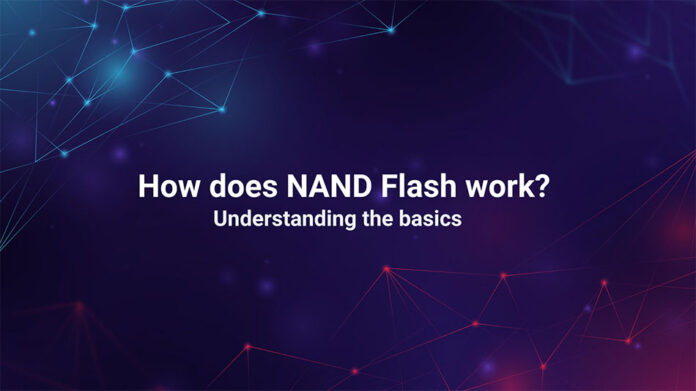Table of Contents
NAND Flash storage solutions came into existence in the 1980s; since then, the market has evolved swiftly into a prosperous and globalized industry. The NAND flash technology has matured in the past decade’s development, experiencing an unprecedented large-scale adoption in the industrial sector owing to its extraordinary technological advances.
The NAND flash is a non-volatile, cost-effective, and durable storage technology that offers high speed, comprehensive temperature support, low energy consumption, and a compact form factor. NAND flash is reliable, offers architectural flexibility, and caters to the excessive bandwidth demand of devices for real-time monitoring and processing of data, consequently enhancing its widespread appeal and popularity. This blog will dive into the fundamentals of NAND flash and its performance.
NAND Flash fundamentals:
Blocks, pages, and sectors are the basic building blocks of NAND memory cells. Data is stored in the form of bits in cells. A block is the smallest unit of NAND flash that can be erased at once. Each page of a typical block contains 2 to 16 KB of data, making a block size 128 pages. A minor NAND that may be read or written to is called a sector, and a sector typically has 512 bytes in size. A controller that controls data reading and writing to and from memory is used to access NAND memory. To prevent individual memory blocks from failing too soon, the controller performs wear leveling, converts logical addresses to physical addresses, and distributes data writing across the memory uniformly.
Number of States
Adding bits to a single cell increases the number of states a cell can possess, resulting in exponential storage capacity. Single-level cell (SLC) has a single bit per cell; it offers low density but high endurance performance; caters to high-end, critical applications. Pseudo-SLCs (pSLCs) store just one bit of data per cell on the triple-cell,multi-cell, or quadruple-cells, and in terms of performance and endurance, it sits between Single-Level Cells (SLCs) and Multi-Level Cells (MLCs). pSLC has better performance and endurance than standard MLC, with an estimated Program/Erase cycle of 20,000 cycles, and is a cheaper alternative to SLC. However, it may not match SLC NAND flash SSDs in performance, but pSLC can offer a better balance of performance and cost for enterprise SSDs.
Multi-level and triple-level cells (MLC & TLC) have 2 and 3 bits per cell, extending high density. But low endurance performance. In contrast, the quadruple-level cell (QLC). Which has 4 bits per cell, and offers the highest density. But is cost-sensitive and mainly used for mass storage applications. Although different types of NAND serve other purposes depending on their characteristics, endurance, performance, cost, and reliability, there is no ‘one-size-fits-all’ solution.
NAND Flash performance:
The devices employing NAND cell memory are much faster and more cost-effective. And execute rapid speeds enabling the NAND flash to gain widespread adoption. Almost anything that serves a data storage function will have NAND Flash storage. Be it the smartphone or tablet, the computer, the server in a web hosting, cameras, and USB drives.
Moreover, it is utilized in embedded systems found in industrial control systems. Medical devices, military equipment, and automotive electronics. Solid-state drives (SSDs). Which provides fast, low-power storage for servers. And data centers are another example of business storage devices that deploy NAND flash. These memory storage gadgets require an efficient NAND storage solution that supports complex GUI, large-scale embedded applications, and low-latency and high-capacity devices.
Compared to other storage technologies, NAND flash provides several advantages. It is dependable and long-lasting, with an average endurance of up to 10,000 erase/write cycles per block. In addition to being energy-efficient, NAND memory uses less power than conventional hard drives.
Conclusion:
NAND flash technology is a versatile and efficient form of non-volatile storage that has revolutionized modern electronics. Flexxon specializes in manufacturing and providing next-generation NAND flash storage and memory devices. Including specialized solutions for industries like Cybersecurity, Industrial, Medical, and Automotive (CIMA). Our products feature advanced cybersecurity solutions like X-PHY, a firmware-based AI-embedded technology. As NAND flash technology continues to evolve. We are determined to stay at the forefront of innovation and develop new storage solutions. That meet the needs of our customers.















